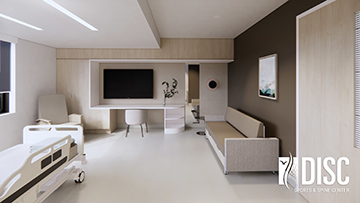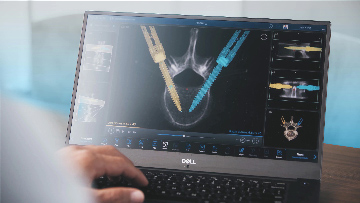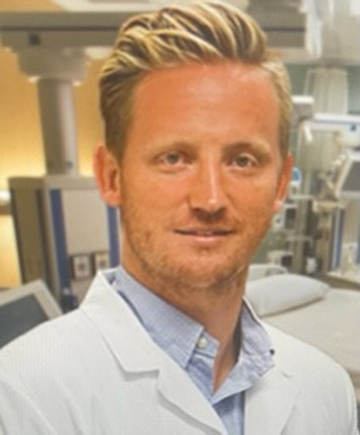DISC Sports & Spine Center announces plans for its most advanced outpatient facility yet.
 DISC Sports & Spine Center
DISC Sports & Spine Center
ROOM TO RECOVER DISC's new facility features four post-op recovery suites that allow patients and their caregivers to prepare to go home in comfort and privacy.
Patients looking for the latest technology and top-caliber spine care will soon have another option in the Los Angeles area. DISC Sports & Spine Center, a longtime provider of outpatient spine surgery, is currently constructing a brand-new 11,000-square-foot ASC in Marina del Ray, Calif., with an anticipated opening in early 2023.
The facility will be DISC's most technologically advanced center yet, and capable of hosting 1,000 complex spine cases per year. Amenities will include two state-of-the-art ORs outfitted with Zeiss microscopes, a PACU bay, four private patient rooms including a luxury suite, an inviting family lounge, a private consult room, a modernly designed waiting room, 2,000 square feet of administrative space, digitally integrated OR feeds, collaborative workstations and conference space for teaching purposes.
To be located in a space adjacent to DISC's existing musculoskeletal clinic in Steelwave's Marina Park, DISC plans to combine "the latest advances in minimally invasive technology and medical infrastructure with a world-class surgical team to elevate the patient experience in a safe, modern setting," according to a press release.
DISC is no stranger to cutting-edge ASCs constructed in aesthetically appealing ways that make patients feel as if they're checking into a hotel instead of undergoing an operation. Its 12,000-square-foot, two-OR DISC Surgery Center at Newport Beach, a destination for spine patients from across the country, has the look and feel of a five-star hotel, says DISC Chief Operating Officer Karen Reiter. "Behind the beautiful facade lies the framework of a technologically advanced facility designed to deliver state-of-the-art spinal care," she says. Take, for example, the facility's HVAC unit, a sealed system that covers the entire ASC. "Every air exchange goes through pre- and post-HEPA filters and is treated with ultraviolet light," says Ms. Reiter. "The advanced system was a significant expense that goes unseen, but it has contributed to our zero infection rate."
DISC launched its first ASC in Marina del Rey 16 years ago. "Over these past 16 years, we have embraced a fierce commitment to constantly evaluate, learn, innovate and fine-tune every part of the patient experience, whether the cases are simple or complex," says founding director Robert S. Bray, MD, a neurological spine surgeon. "Our new facility is the product of all of this — an ASC upholding DISC's superior quality while creating a model that is truly the future of high-acuity outpatient spine for the U.S."
.svg?sfvrsn=be606e78_3)


.svg?sfvrsn=56b2f850_5)